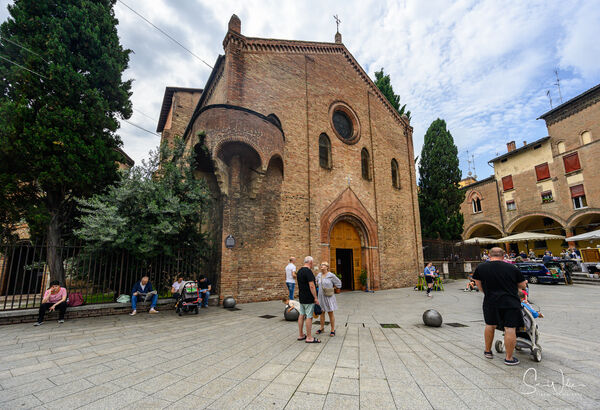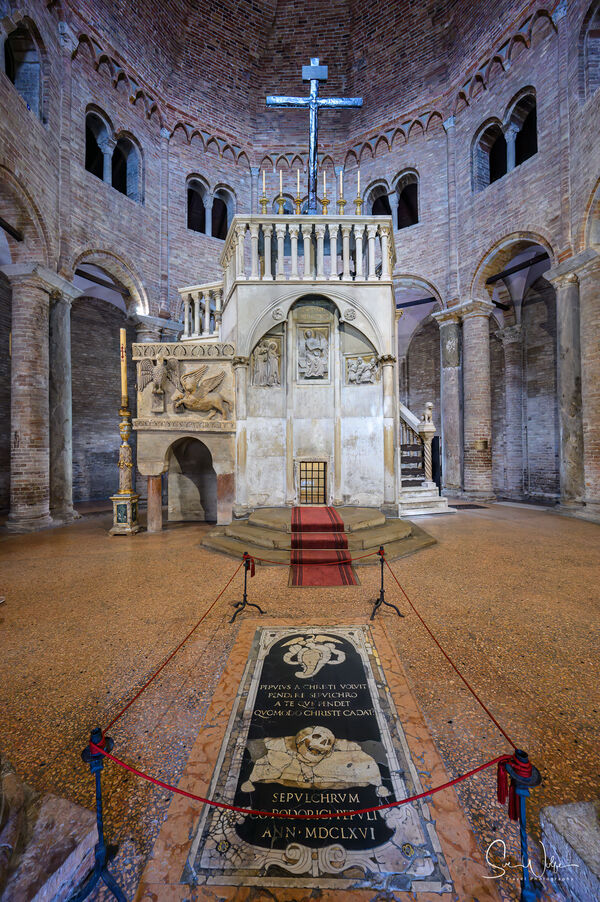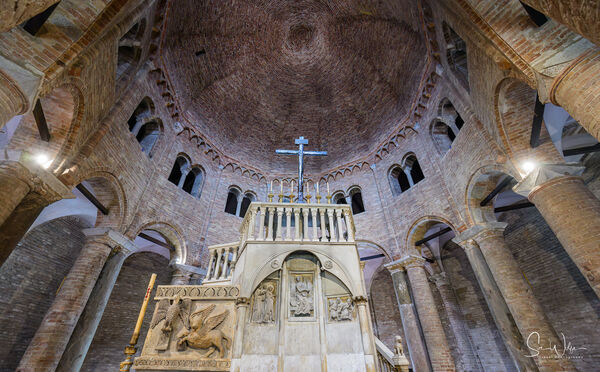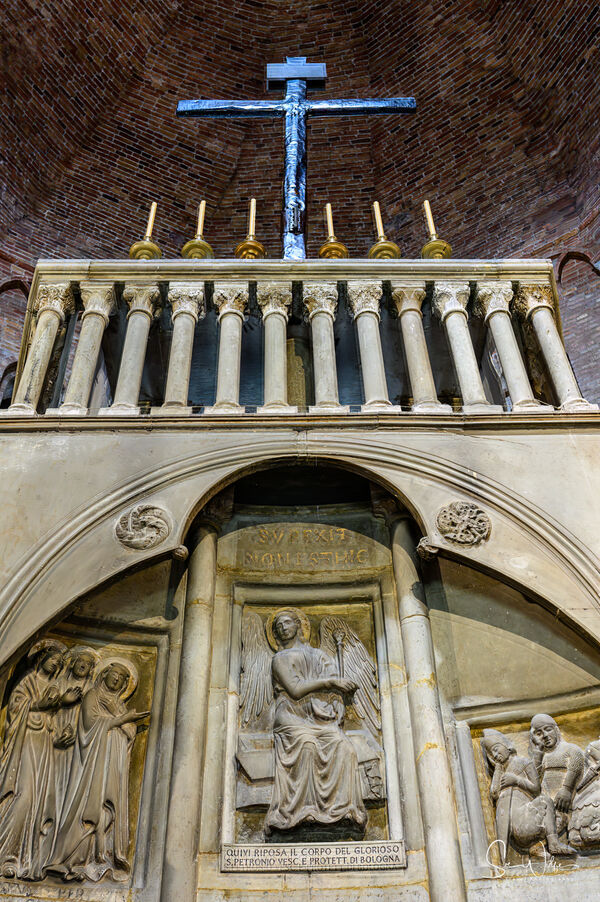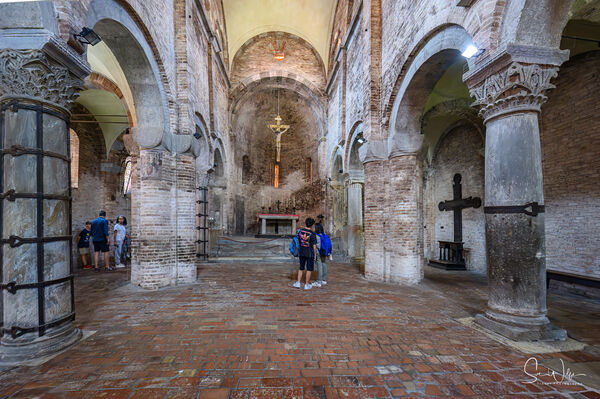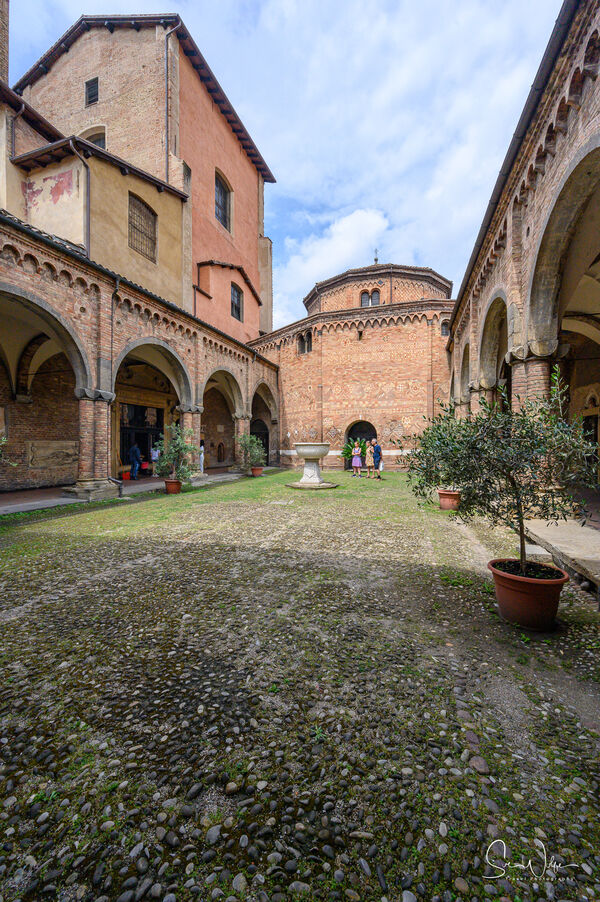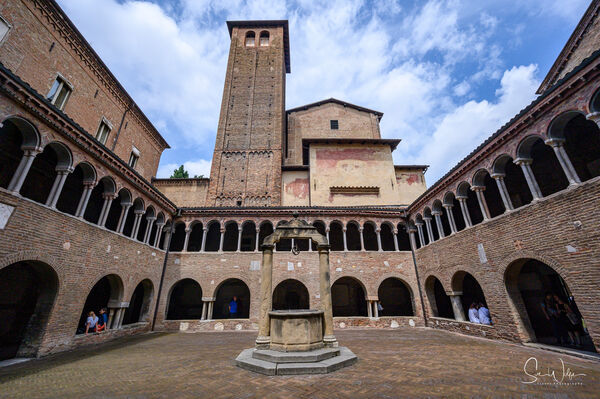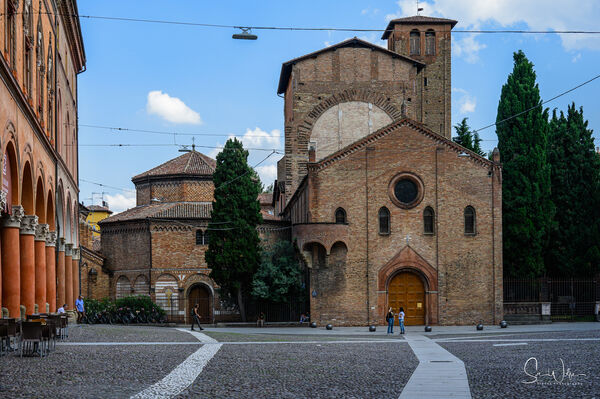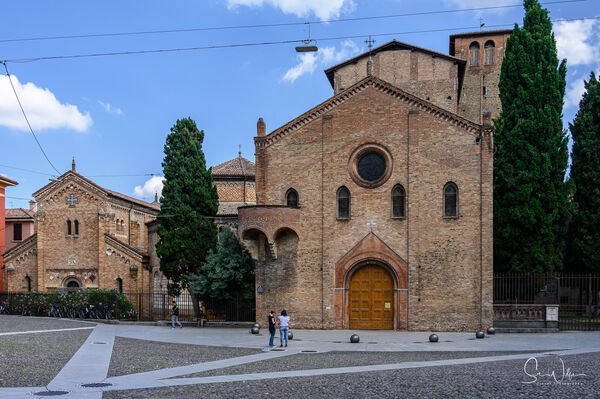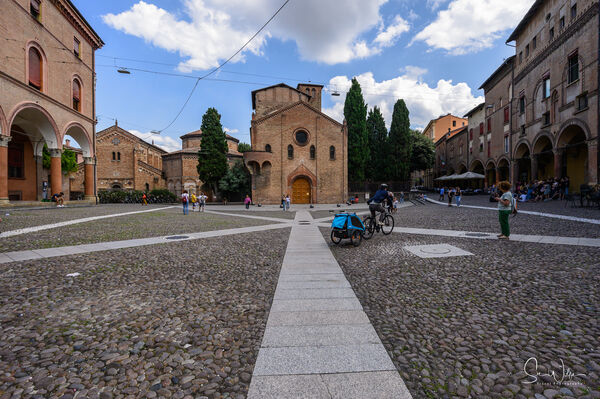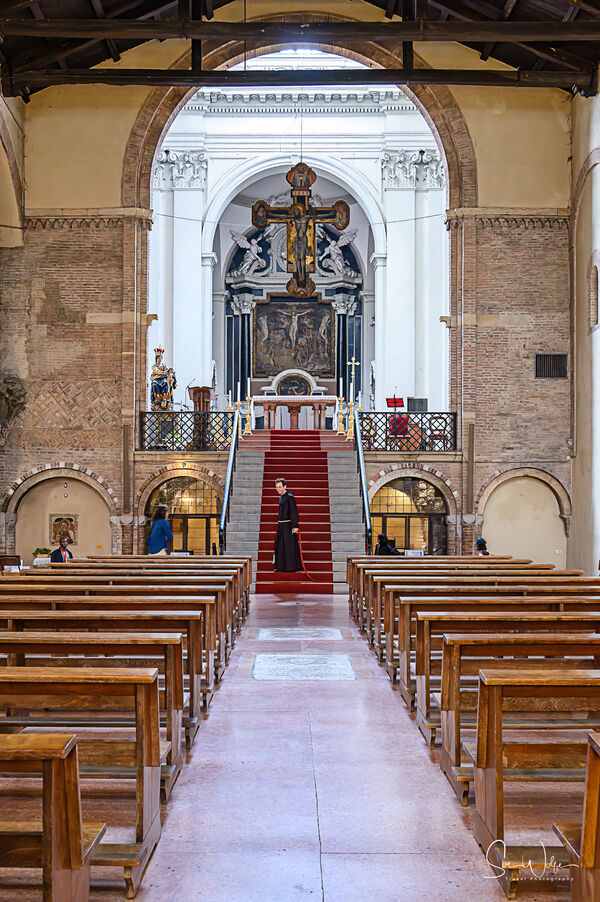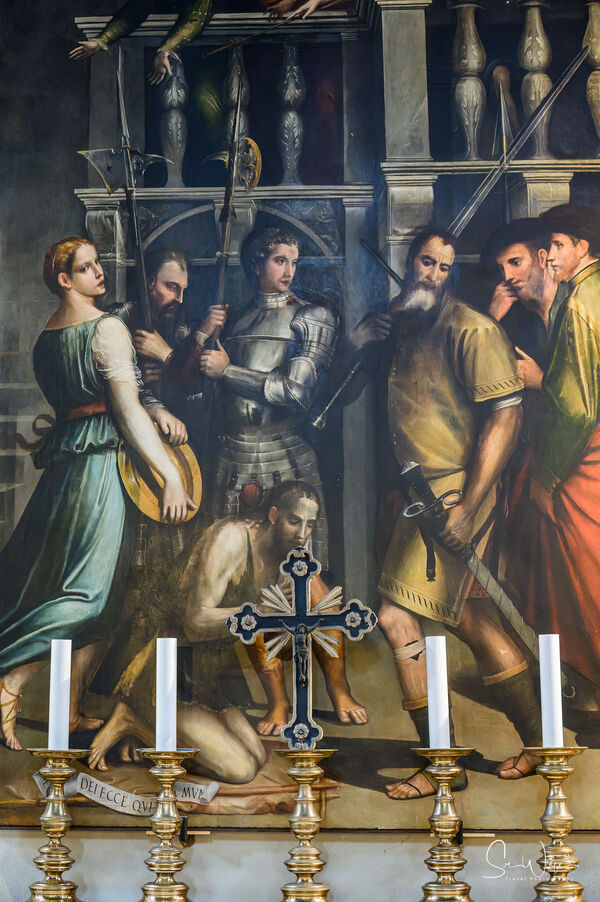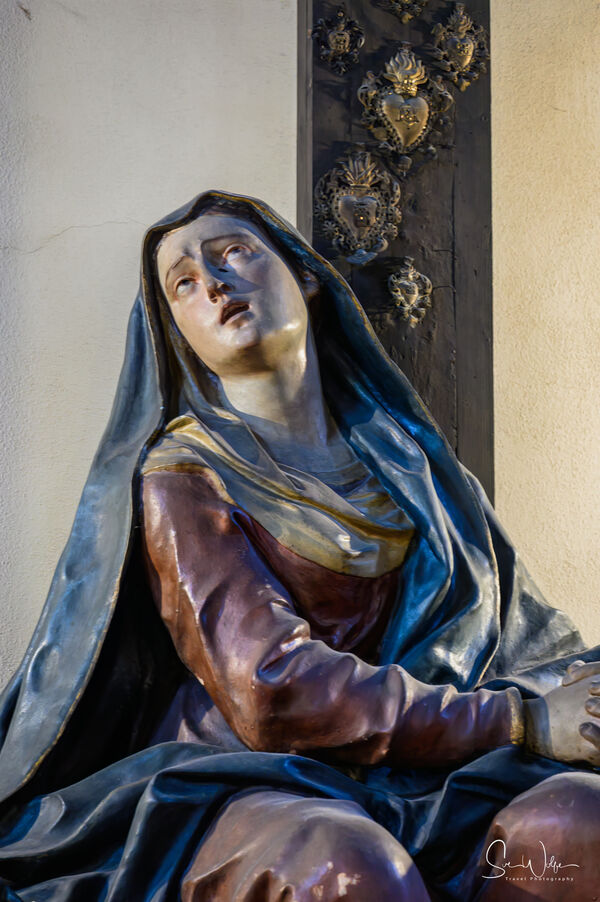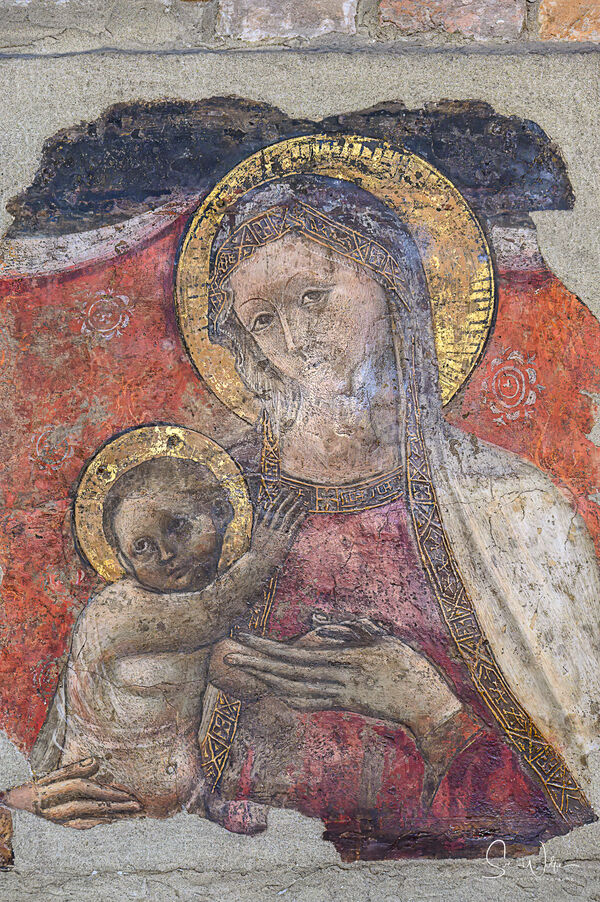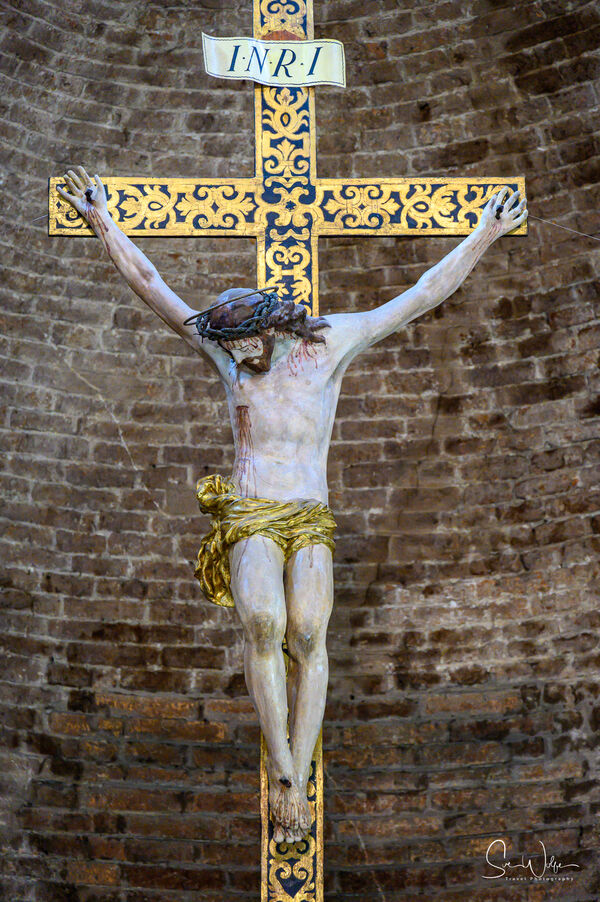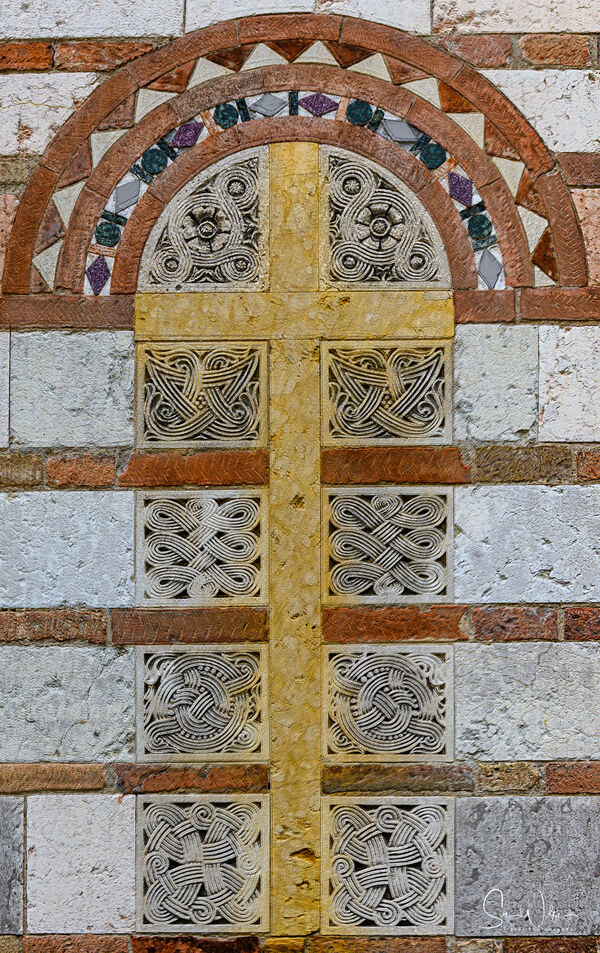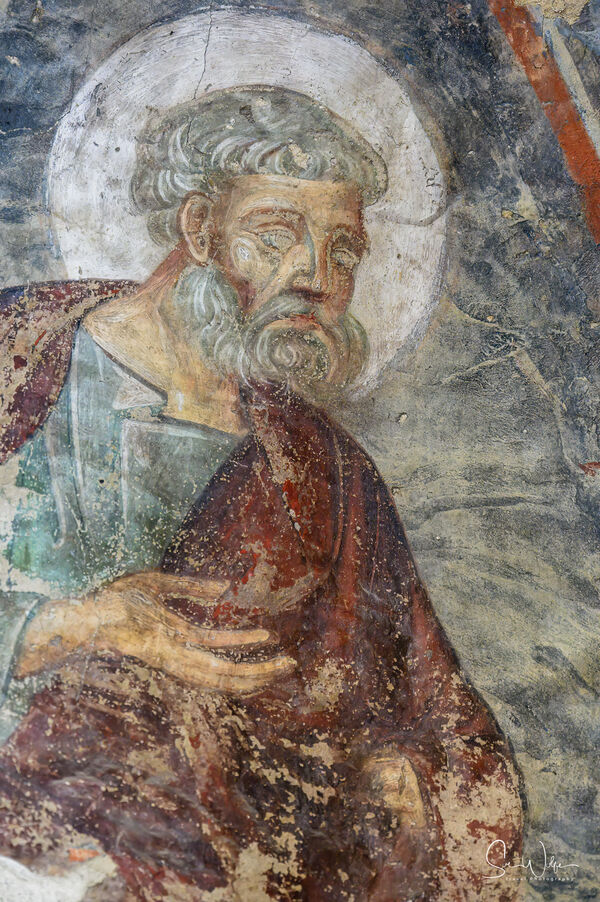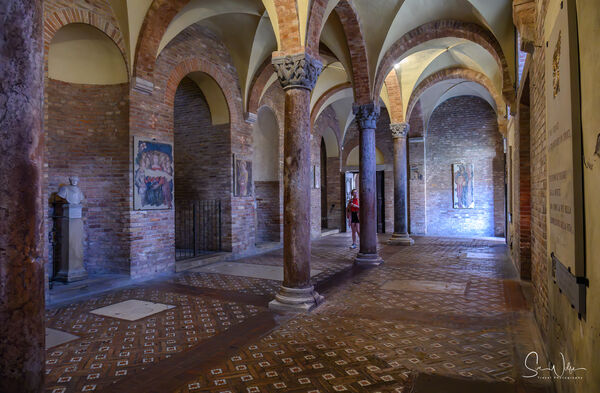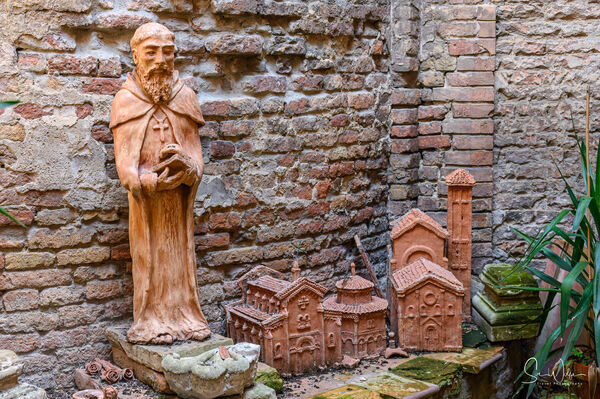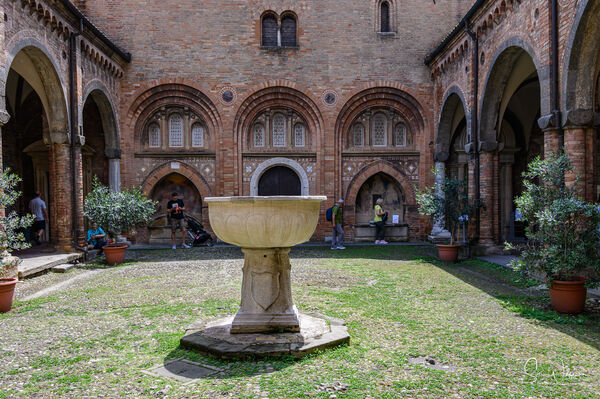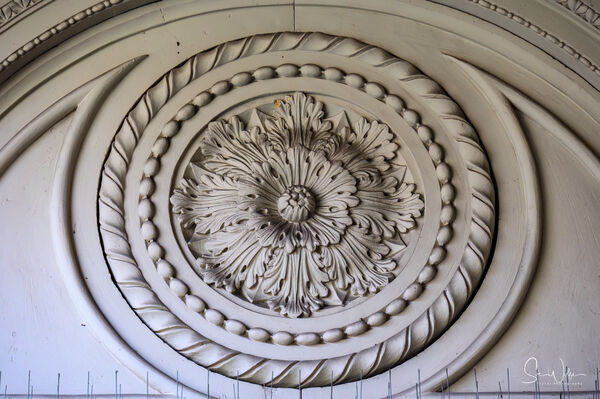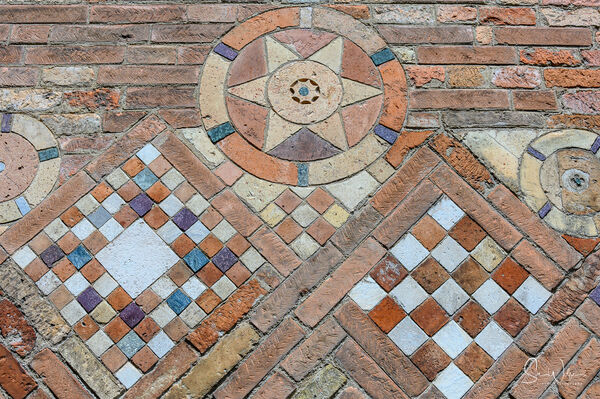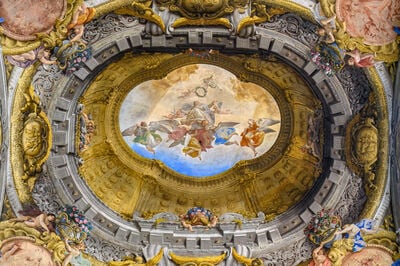 Le Sette Chiese
Le Sette Chiese
22 images 1 contributors Shoot freely
Sue Wolfe
About this spot
Le Sette Chiese was originally a complex of seven churches in one. The complex dates to the 5th century and may have been founded by Bishop Petronius. Only four of the interlocking churches remain—Chiesa del Crocifisso, Church of San Sepolcro, Santi Vitale e Agricola, and Martyrium.
The Chiesa del Crocifisso has changed the most since its construction in the 8th century. The church was destroyed during a Hungarian invasion in the 10th century but was rebuilt by the Benedictines in the Romanesque style with a single nave. The presbytery, remodeled in the 17th century, features the Crucifix by Simone dei Crocifissi (1380). Steps lead down to a crypt which was built to house the relics of the early Bolognese martyrs Vitale and Agricola. Their remains are contained in a golden urn on the altar. Every morning and evening, mass is celebrated in the crypt by monks from the Benedictine-Olivetan order.
The church of San Sepolcro was modelled on Jerusalem’s Holy Sepulcher. It is the most famous of the churches. It has an octagonal base with a twelve-sided cupola. Some of the columns used in the construction are from the former temple to Isis located on this site. The black marble column symbolizes the column where Jesus was whipped. The body of St. Petronius was found here in the 12th century and was transferred to the Basilica of San Petronio in 2000 to be reunited with the saint’s head. The large pulpit takes center stage in the church.
Santi Vitale e Agricola is the oldest church in Bologna. It is brick and is very simple in appearance with no transept. It is dedicated to the first Bolognese martyrs, Vitale and Agricola, who were persecuted in the time of Diocletian around 305 AD. It is believed that Agricola, a Roman Christian, converted his slave, Vitalis, to Christianity. Vitalis was executed in the amphitheater and Agricola, who refused to give up his religion, was crucified. In the 5th century a tomb in the church was found with the inscription “Symon.” Many thought it was the tomb of St. Peter. When pilgrims began to visit the church in Bologna instead of going to Rome, the Pope filled the church with dirt and it stayed that way for more than 70 years. Eventually it was reopened and reconstructed.
Adjoining the Santi Vitale e Agricola is the Cortile di Pilato. The courtyard contains a large marble basin erroneously believed to have been used by Pontius Pilate to wash his hands during the trial of Jesus. Near one of the columns is the image of a rooster, referring to the denial of St. Peter.
Behind the Cortile di Pilato is the Martyrium, also known as the Church of the Holy Cross. Very little is known about its history. From the time of the Crusades until 1950, a relic of the Holy Cross was kept in the central chapel. There is also a Benedictine cloister with two tiers of loggias that leads to the Chapel of the Bandage.
The Chiesa del Crocifisso has changed the most since its construction in the 8th century. The church was destroyed during a Hungarian invasion in the 10th century but was rebuilt by the Benedictines in the Romanesque style with a single nave. The presbytery, remodeled in the 17th century, features the Crucifix by Simone dei Crocifissi (1380). Steps lead down to a crypt which was built to house the relics of the early Bolognese martyrs Vitale and Agricola. Their remains are contained in a golden urn on the altar. Every morning and evening, mass is celebrated in the crypt by monks from the Benedictine-Olivetan order.
The church of San Sepolcro was modelled on Jerusalem’s Holy Sepulcher. It is the most famous of the churches. It has an octagonal base with a twelve-sided cupola. Some of the columns used in the construction are from the former temple to Isis located on this site. The black marble column symbolizes the column where Jesus was whipped. The body of St. Petronius was found here in the 12th century and was transferred to the Basilica of San Petronio in 2000 to be reunited with the saint’s head. The large pulpit takes center stage in the church.
Santi Vitale e Agricola is the oldest church in Bologna. It is brick and is very simple in appearance with no transept. It is dedicated to the first Bolognese martyrs, Vitale and Agricola, who were persecuted in the time of Diocletian around 305 AD. It is believed that Agricola, a Roman Christian, converted his slave, Vitalis, to Christianity. Vitalis was executed in the amphitheater and Agricola, who refused to give up his religion, was crucified. In the 5th century a tomb in the church was found with the inscription “Symon.” Many thought it was the tomb of St. Peter. When pilgrims began to visit the church in Bologna instead of going to Rome, the Pope filled the church with dirt and it stayed that way for more than 70 years. Eventually it was reopened and reconstructed.
Adjoining the Santi Vitale e Agricola is the Cortile di Pilato. The courtyard contains a large marble basin erroneously believed to have been used by Pontius Pilate to wash his hands during the trial of Jesus. Near one of the columns is the image of a rooster, referring to the denial of St. Peter.
Behind the Cortile di Pilato is the Martyrium, also known as the Church of the Holy Cross. Very little is known about its history. From the time of the Crusades until 1950, a relic of the Holy Cross was kept in the central chapel. There is also a Benedictine cloister with two tiers of loggias that leads to the Chapel of the Bandage.
Join PhotoHound to learn how, where and when to capture amazing photos here
- Know the best times, seasons & shooting conditions
- Detailed directions - maps, co-ordinates and directions
- Know how to get there - where to park or how to reach there using public transport
- Browse inspirational photos and learn how they were taken - see the EXIF details
- Bookmark your favourite spots for future reference
- Know exactly when to shoot for beautiful photographs - sunrise, sunset, blue hour and astrophotography
- Detailed, 7-day weather forecast at this location
- Share your images with like-minded travel photographers
Essential Information
Web links
https://www.bolognawelcome.com/en/places/religious-buildings/santo-stefano-complex
Guides
This spot appears in 1 guide.
